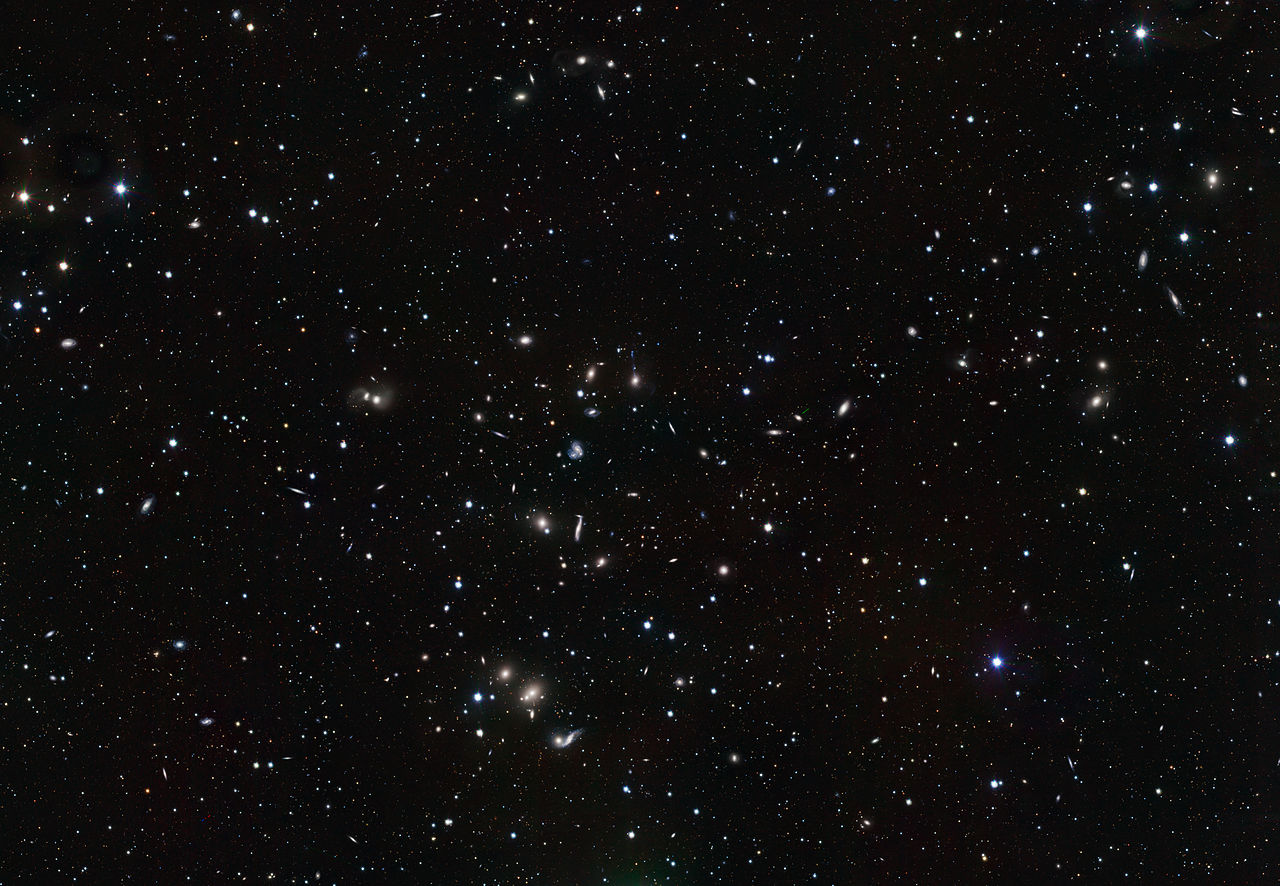Rich clusters: containing thousands of galaxies, larger than 3 Mpc in diameter.
Poor clusters: hundreds or less galaxies, smaller than 1 Mpc in diameter, also often called 'groups'.
Clusters are also classified as 'regular', which has a spherical appearance and central concentration, and 'irregular' ones.
Rich, regular clusters contain mostly elliptical galaxies (e.g. 80% of the brightest galaxies in the Coma cluster are ellipticals); irregular ones have a more even mixture of galaxy types.
The Virgo cluster , a rich, irregular one, more than 2500 galaxies, 15 Mpc away

[The Virgo cluster. The image field is somewhat larger than a full moon. (Credit: Rogelia Bernal Andreo)]
The Coma cluster, a rich, regular one, more than 10000 galaxies, 90 Mpc away

[The central part of the Coma cluster. This image is about a full moon across.]
The Hercules cluster, a rich, irregular one, 200 Mpc away

[The Hercules cluster. This image is about one degree across. (Credit: ESO/VLT) ]


There are two sub-groups around the Milky Way and M31. These two galaxies and M33 are the only 3 spiral galaxies in the Local Group. There are many others, which are irregular or dwarf galaxies.
About 60 small galaxies are found within 420 kpc from the Milky Way.
The Sagittarius Dwarf is a very nearby one, discovered in 1994, 25 kpc away from the Earth.
A dwarf elliptical, Antlia, containing 106 stars within 1~2 kpc, 1 Mpc away, was found in 1997.
The Canis Major Dwarf, found in 2003, is the nearest so far. It is 13 kpc from the Milky Way center, 8 kpc from the Earth.

The Local Group is located in the Local Supercluster, of which the Virgo cluster is near the center. The Local Supercluster is about 50 Mpc in diameter.


